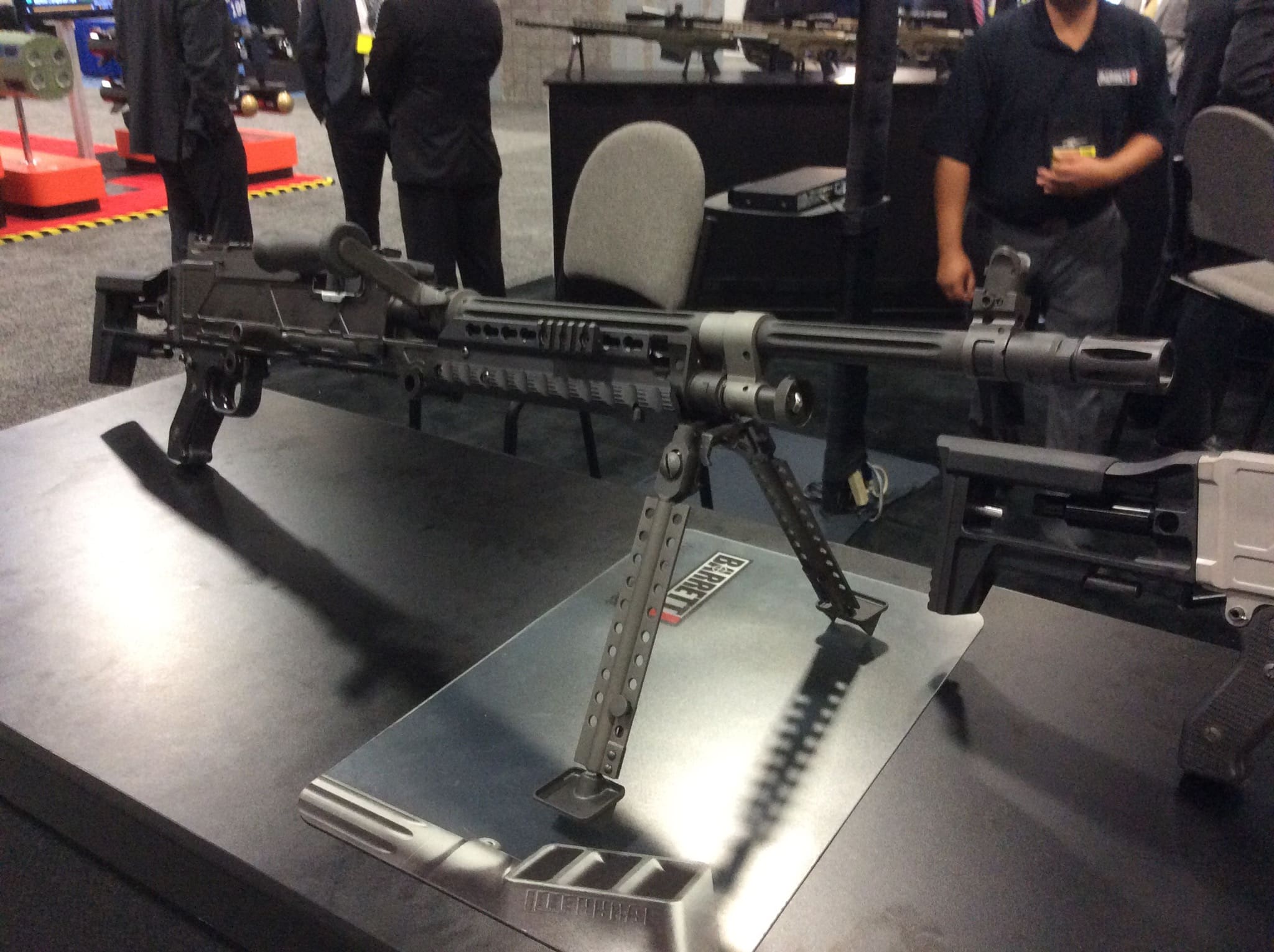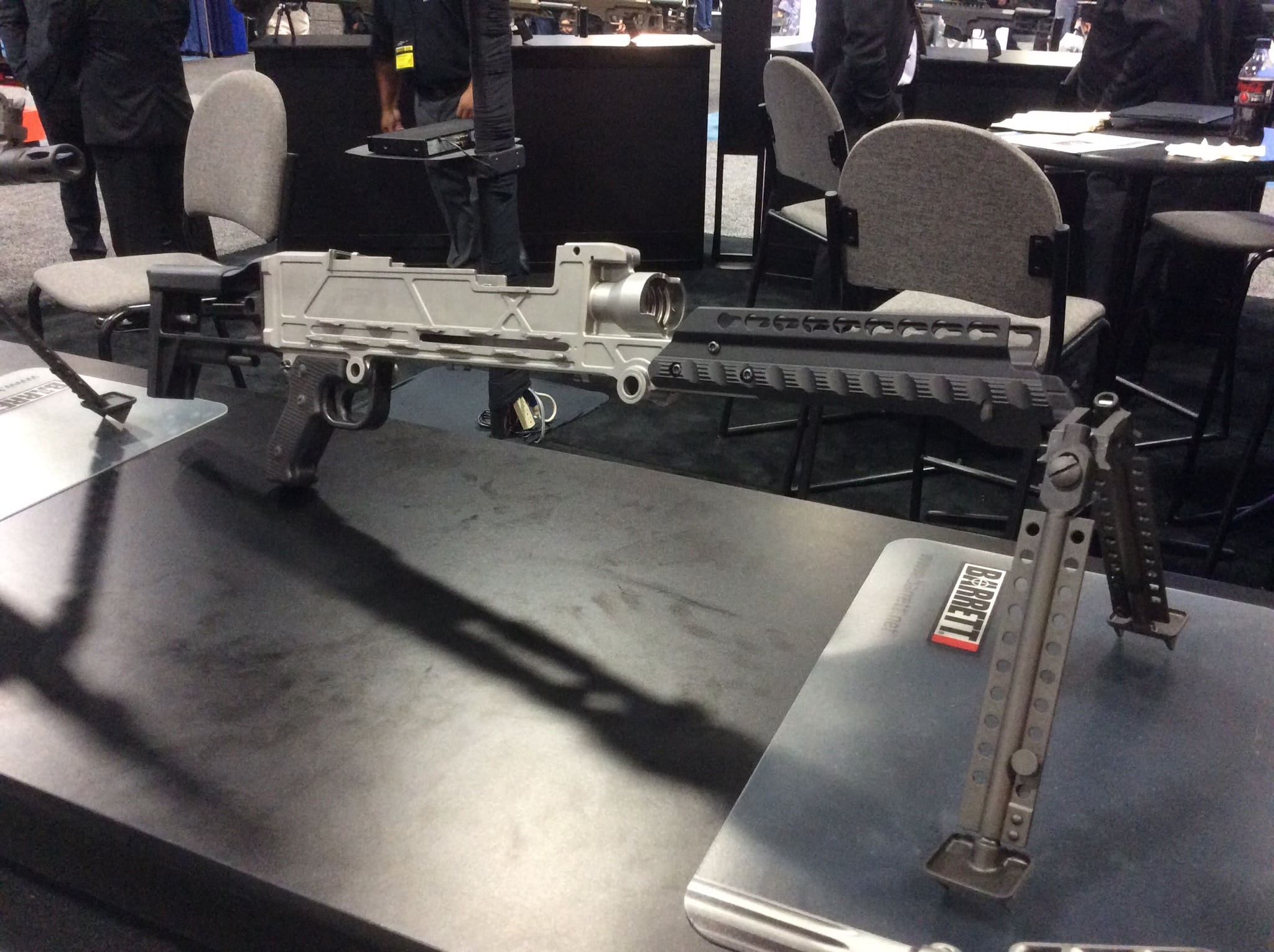We originally posted this story during AUSA 2014 regarding the Barrett M240LW. There’s been quite a bit of interest regarding this new variant of the medium machine gun workhorse. It’s lighter but that’s because they’ve approached the design from a completely new direction.
Although it’s not exactly new, the Barrett M240LW is a lightweight variant of the fantastic M240 medium machine gun. Sure, the Army has the M240L which cut some significant weight off of the American version of the FN MAG but it uses a Titanium receiver which translates into mucho dinero.
Barrett took a different approach. They trimmed the fat out of the weapon. You’ve got to remember, the MAG 58 is over 60 years old. By analyzing the gun’s construction and applying modern design and manufacturing techniques, they were able to trim about five-and-a-half pounds from its weight down to 21.15 pounds The design is also interesting in that the receiver is manufactured in two pieces from solid billet and then welded together. This results in 2 receiver components rather than the 64 found on a standard M240. You’ll also notice a new, Barrett-designed telescoping Buttstock with adjustable length of pull and hydraulic buffer. While there is no top barrel shroud the lower handguard features KeyMod slots.
Tags: Barrett Firearms




Another victory of modern science and technology over conservative design. Great job.
Repeal the NFA.
Big fans of the company and the man Ronnie Barrett. What kind of stud boycotts California? Fine example of an American!
A stock M240B comes in at 27 pounds
FN’s M240L with short barrel and titanium receiver 22 pounds
Barrett pulled of 21 pounds with design updates
Exactly. The M240L took a lot of shortcuts to get to its current weight. The Barrett seems like there are significantly fewer design compromises.
The only way to solve this question is . . . Thunderdome! 2 guns enter, one gun leaves.
Looks like the M60, take two.
And I don’t mean that in a good way.
So you mean the M240 looks like the M60? What do you base that on?
What if you took the design of the M240LW and built it using Titanium?
It would be even lighter!
It would probably crack apart. Crystal structure of Ti makes it prone to development of straight cracks when exposed to some specific kinds of forces. Indeed, Ti is considered high strength material, but only within specific range of forces applied to it. Look up “titanium frame crack” on Google and take a look at photos. Did you notice that you can’t find mountaineering carbiners made of Ti? And the special thing is, cracks are not developing immediately – usually it takes some time. It makes stuff made of Ti passing short strength tests easily, but then it just cracks, after several months or something, where steel (more durable in case of bending forces, for example) will work forever.
The M240Ls haven’t come apart yet.
Yes, because they are much thicker than M240LW. AlexC was talking about making M240LW of Ti. I’m not trying to say, that Ti is totally unusable, but if you have some part precisely engineered without any extra weight to be made of steel, making it exactly the same, but of Ti, would likely lead to those cracks. Where steel bends or flexes, Ti of the same size cracks. Therefore, usually, Ti parts are just about 25-30% lighter than steel ones with the same function, while density of Ti is almost 50% smaller. Having extra material for more rigidity is mandatory. (I’m speaking about parts made to stand forces, not about Snowpeak mugs and spoons.)
Wait till the guys down in the unit level workshops get their hands on both and we meet the even lighter step-child.
Does FN still own the MAG 58 design? And if so, how can Barrett produce its variant without running afoul of FN’s rights?
design is over 20 ( well way more then that ) years old meaning there unique Intellectual property protection is expired. generally after 20 years Patent rights expire Farther more Barrett’s design changes likely qualify as a new design.